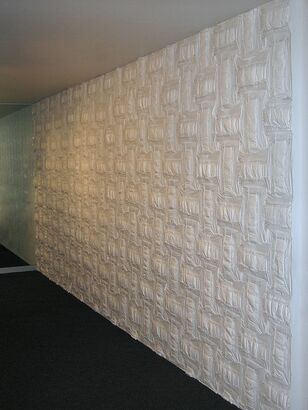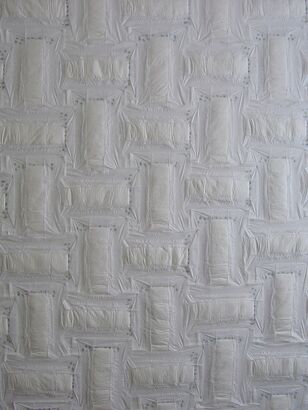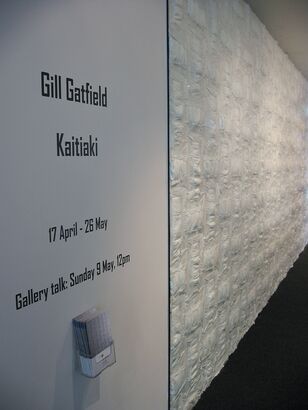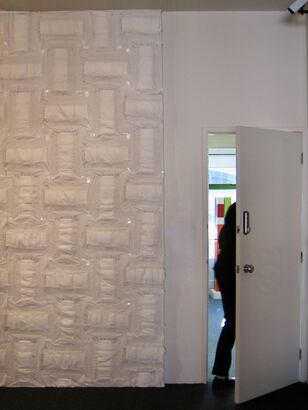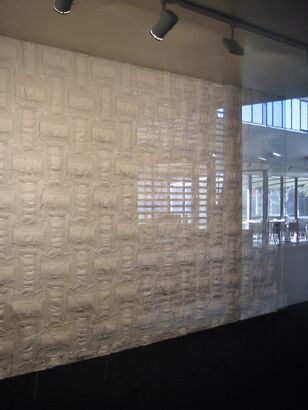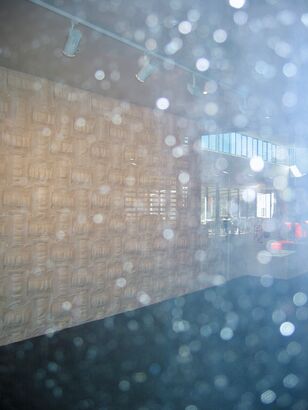From the gallery entrance to the curator's door, a 30-square-metre monochromatic grid of crisp white disposable nappies/diapers is stretched and woven in a continuous, undulating field. Through material, method, site, and title, the work explores the concept of kaitiaki – a principle rooted in Te Ao Māori and a cornerstone in Aotearoa New Zealand's founding treaty, Te Tiriti o Waitangi (Treaty of Waitangi). Extended through law, kaitiaki links care for land, people, art, taonga (treasure), and collective guardianship to ancestral knowledge. Stretched from ceiling to floor, this immersive matrix of repeating infant-care products frames a transformational space, holding tension between consumerism, convenience, and human potential. Each open module proposes a unique, precious life connected through geometric steps echoing patterns shared across cultures and time. Kaitiaki weaves sacred concepts through a profane yet profoundly precious material, creating an absorbing membrane that both invites and resists.
